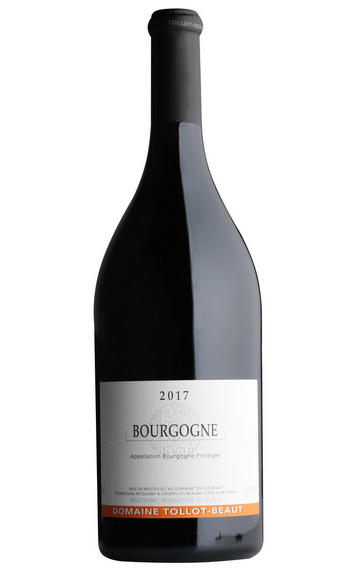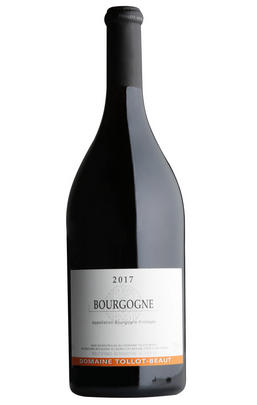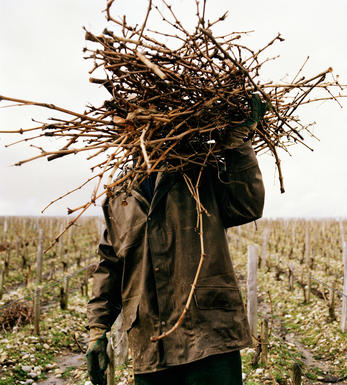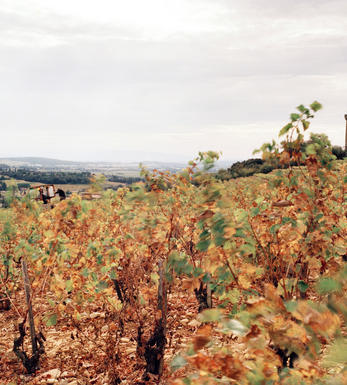
2019 Bourgogne Rouge, Domaine Tollot-Beaut, Burgundy

Critics reviews
Rich intense purple, with plenty of energy to the nose, certainly rich and ripe dark fruit, enough structure behind, just a bit of acidity. 14.2% alcohol.
Jasper Morris MW, Inside Burgundy (October 2020)
A ripe and slightly jammy nose reflects notes of red currant, raspberry and warm earth. The rich, concentrated and plush middle weight flavors exude a touch of bitter pit fruit character on the mildly rustic finish. This isn't especially vibrant, but it is certain powerful and particularly so for a Bourgogne.
Drink 2023+
Allen Meadows, Burghound (April 2021)
About this WINE

Tollot-Beaut
The Tollot-Beaut family Domaine is based at Chorey-Les-Beaune, often thought of as a slightly old-fashioned backwater. Their vineyard holdings, however, extend to Beaune, Savigny, Aloxe-Corton and a tiny holding in the Corton Charlemagne vineyard.
The hallmark of their wines is a striking purity of fruit - the reds display a truly succulent quality supported (but never dominated) by judicious use of oak.
It is now Nathalie Tollot who is in charge, alongside other members of this extensive family.

Bourgogne Blanc
Bourgogne Blanc is the appellation used to refer to generic white wines from Burgundy, a wide term which allows 384 separate villages to produce a white wine with the label ‘Bourgogne.’ As a result of this variety, Bourgogne Blanc is very hard to characterise with a single notable style, however the wines are usually dominated by the presence of Chardonnay, which is just about the only common factor between them. That being said, Chardonnay itself varies based on the environmental factors, so every bottle of Bourgogne Blanc will vary in some way from the next! Pinot Blanc and Pinot Gris are also permitted for use in Bourgogne Blanc under the regulations of the appellation.
As Bourgogne Blanc is very much an entry-level white wine for most regions in Burgundy, prices are usually very reasonable, and due to the terroir and climate of Burgundy, Bourgogne Blanc wines tend to have a strong acidity to them, combined with a vibrant and often fruity palate when compared with other whites from the New World, say, allowing fantastic matchmaking with many different kinds of food.

Pinot Noir
Pinot Noir is probably the most frustrating, and at times infuriating, wine grape in the world. However when it is successful, it can produce some of the most sublime wines known to man. This thin-skinned grape which grows in small, tight bunches performs well on well-drained, deepish limestone based subsoils as are found on Burgundy's Côte d'Or.
Pinot Noir is more susceptible than other varieties to over cropping - concentration and varietal character disappear rapidly if yields are excessive and yields as little as 25hl/ha are the norm for some climats of the Côte d`Or.
Because of the thinness of the skins, Pinot Noir wines are lighter in colour, body and tannins. However the best wines have grip, complexity and an intensity of fruit seldom found in wine from other grapes. Young Pinot Noir can smell almost sweet, redolent with freshly crushed raspberries, cherries and redcurrants. When mature, the best wines develop a sensuous, silky mouth feel with the fruit flavours deepening and gamey "sous-bois" nuances emerging.
The best examples are still found in Burgundy, although Pinot Noir`s key role in Champagne should not be forgotten. It is grown throughout the world with notable success in the Carneros and Russian River Valley districts of California, and the Martinborough and Central Otago regions of New Zealand.


Buying options
Add to wishlist
Description
Rich intense purple, with plenty of energy to the nose, certainly rich and ripe dark fruit, enough structure behind, just a bit of acidity. 14.2% alcohol.
Jasper Morris MW, Inside Burgundy (October 2020)
wine at a glance
Delivery and quality guarantee